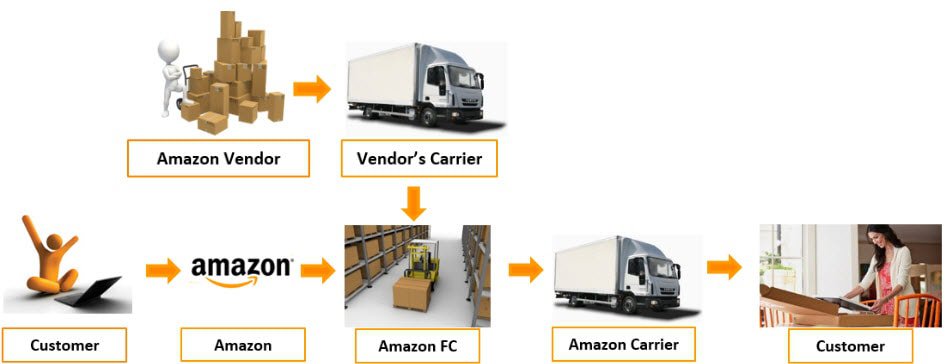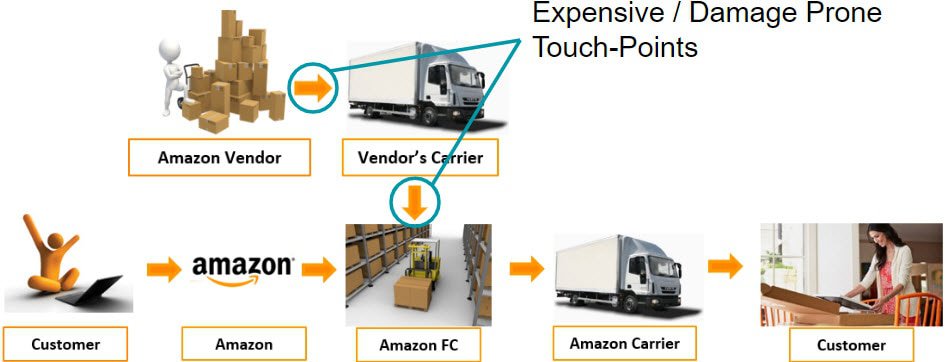For Amazon Vendors, Direct Fulfillment is the most under-utilized tool that helps our clients keep the virtual shelves fully stocked.
- Blair Anderson - President
Selling through Amazon is “easy” but being confidently successful requires a disciplined focus.
The standard retail model is a traditional process, where Vendors receive purchase orders (POs) from Amazon, Vendors contact a carrier for shipment to Amazon FCs, vendors load the trucks, and products are finally available for purchase after being properly received at the FCs as sellable.

The largest problem with this model, is that amazon’s warehouse space is not FREE. They have to reasonably trust that your product will sell at a profit, and they have become more and more strict about the number of items purchased through their network.
The second main problem with the standard method, is that Amazon still does not ship efficiently. They are notorious for using box sizes that are 10x the volume of the shipped unit, with odd amounts of bubble-wrap. They also have employees that are trained to ship ASAP without damage, erroring on ASAP over gentle handling.

How Does Dropshipping Work?
Drop Shipping through Amazon is a strategy that allows Vendors to offer products/bundles/packages to Amazon customers without first shipping the inventory into Amazon FCs.

With the Direct Fulfillment model, two touch-points are removed from the process, drastically reducing the mishipments and damaged goods. Amazon never sees or handles the product, the manufacturer never negotiates with the carriers or customer, and the buyers are more likely to be satisfied by the final product.
Inventory levels are simply maintained by the manufacturer and Amazon offers it for sale. When an order is placed, Amazon sends a PO to the manufacturer and provides an Amazon-Paid shipping label (FOB) to be shipped directly to the end customer.
Here is a brief explanation on dropshipping in 3 Steps:
- Buyer orders through Amazon checkout
- Amazon places an identical PO with the supplier/manufacturer
- Supplier ships the product directly to the buyer, and shipping is paid by Amazon
What are some of the pros and cons of dropshipping?
Pros
The original growth model of Amazon requires sellers to list as much of their selection as possible, and we have found it to be true that our brands with the greatest selection tend to have the largest sales.
- The supplier can often provide a cheaper product because they do not pay freight
- The lead times are perfectly fluid to match the existing lead time of the supplier
- Amazon holds less inventory, but still keeps their same payment terms. Meaning that Amazon holds a float.
- Manufacturer is always going to be better at packaging a single unit that Amazon will.
- Skipping Amazon’s FC is a huge deduction in damaged/returned items
- Allows the factory to offer items without needing Amazon’s investment/buy-in
Cons
- Amazon’s fastest shipping methods are much faster than the average factory, so shipments are slightly slower
- Amazon’s FC network is vast and incredibly optimized to have inventory closer to the last mile customer than shipping from a single point.
We absolutely recommend dropship when it makes sense for you and your brand. Sometimes it doesn’t but we feel that making investment to support this process is a fantastic strategy in the long-run.